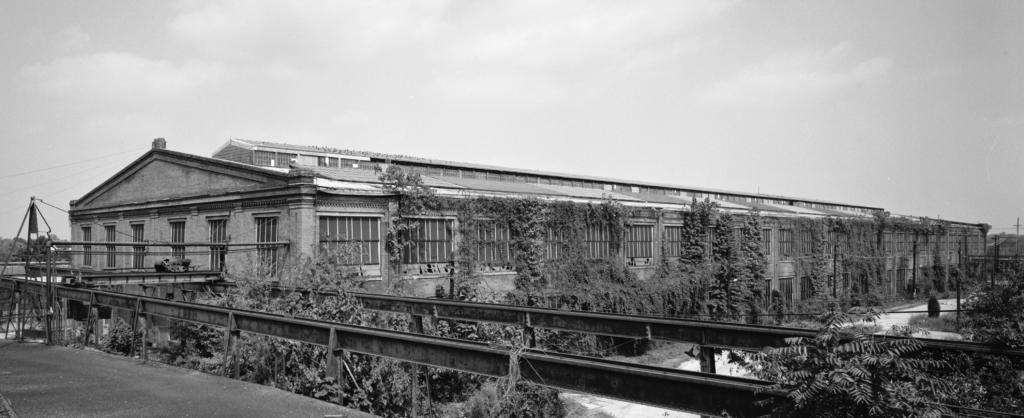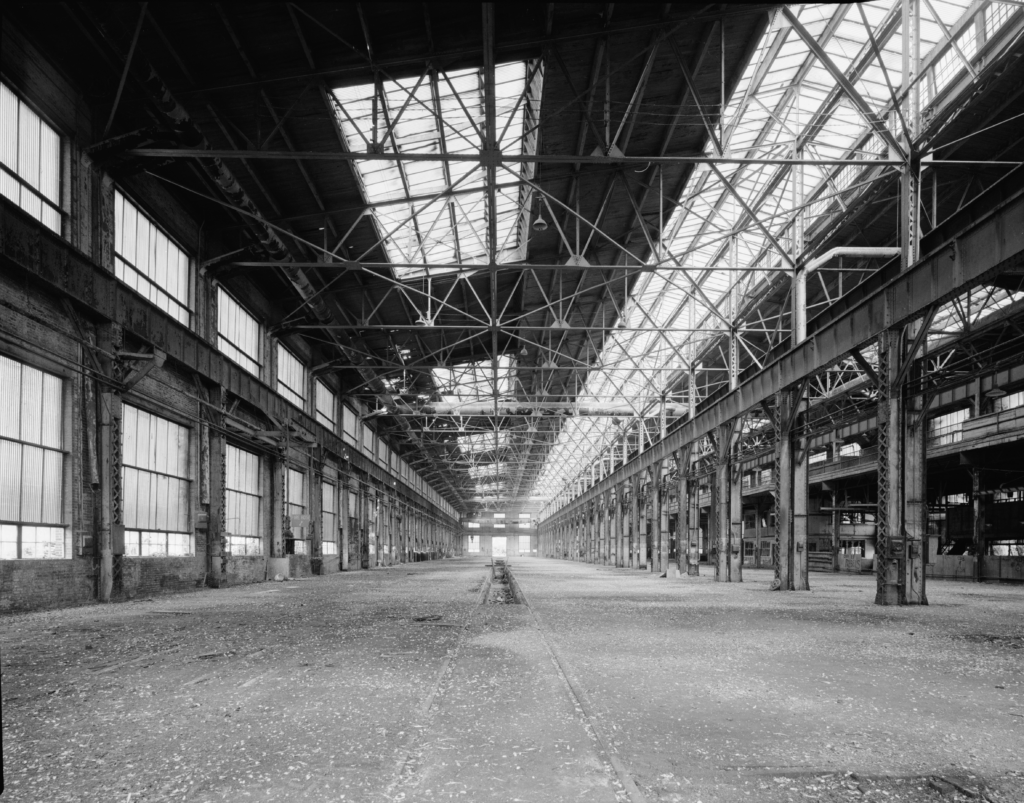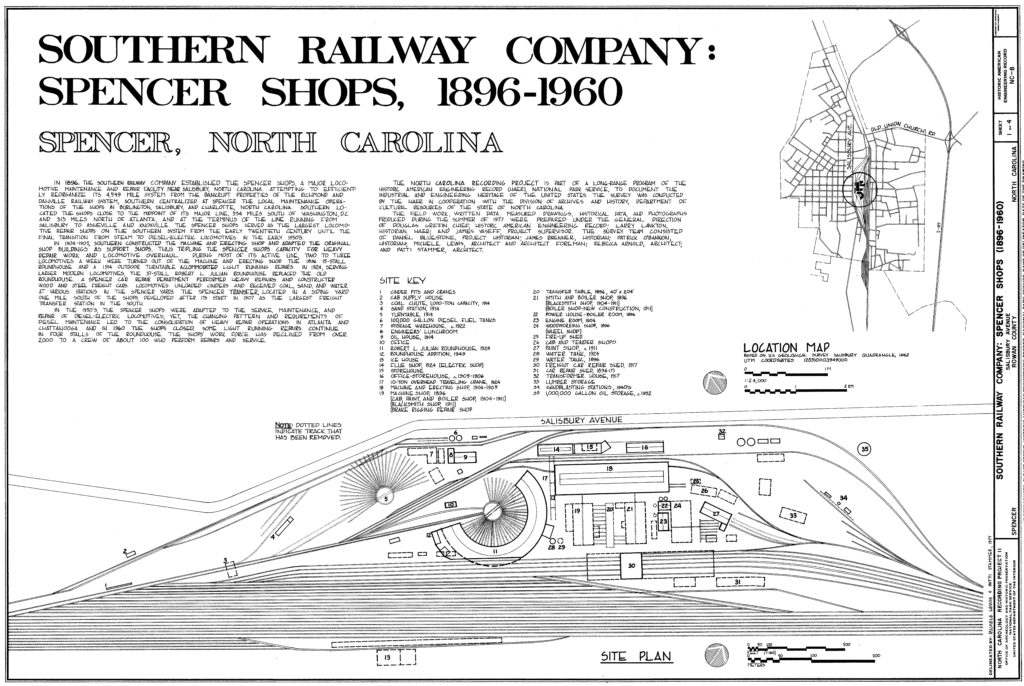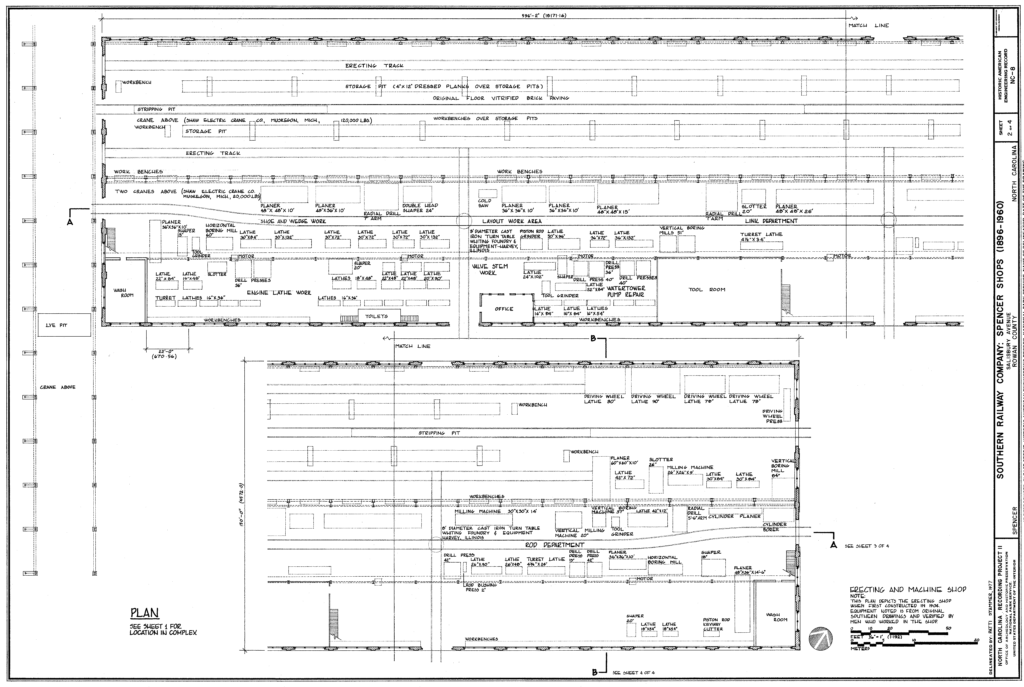Built at the beginning of 20th Century, Southern Railway Machine & Erecting Shop tripled repair capacity at North Carolina Spencer yards

In 1896, the Southern Railway began construction on repair shops to be located in Spencer, North Carolina. Created by merging a number of small to mid-size bankrupt railroads, the Southern Railway located the repair shops in Spencer to replace and centralize the repair shops of its predecessors at the halfway point between Washington, D.C. and Atlanta, Georgia. [1]

In 1905-1906 Southern built the subject of these measured drawings, a machine and erecting shop for heavy repair work. The railroad then repurposed the existing shops to support work for the main building. This tripled the capacity of the Spencer shops’ to perform heavy repair and overhaul of locomotives.

The Spencer shops remained the largest locomotive repair shops on the Southern Railway until steam was phased out in the 1950s. At that point, the shops were adapted to service and repair diesel-electric locomotives. However, the changing requirements of diesel-electric locomotive maintenance and repair led to the consolidation of heavy repair work in Atlanta, Georgia, and Chattanooga, Tennessee, and the Spencer shops, other than a portion of the roundhouse used for light running repairs, were closed in 1960.



[1] The Spencer Shops were recorded for the Historic American Engineering Record, a project of the National Park Service, and in conjunction with the Division of Archives and History, Department of Cultural Resources of the State of North Carolina. The field work, written data, measured drawings, historical data and photographs were produced in 1977 under the direction of Douglas Griffin, chief of HAER; Larry Lankton, HAER historian; and James Vaseff, project supervisor. The survey team consisted of Daniel Bluestone, project historian; James Brenner, historian; Patrick O’Bannon, Historian; Michele Lewis, architect foreman; and architects Rebecca Arnold and Patti Stammer. The records of the Historic American Engineering Record are kept in the Library of Congress where more information on this project can be found under survey number NC-8.